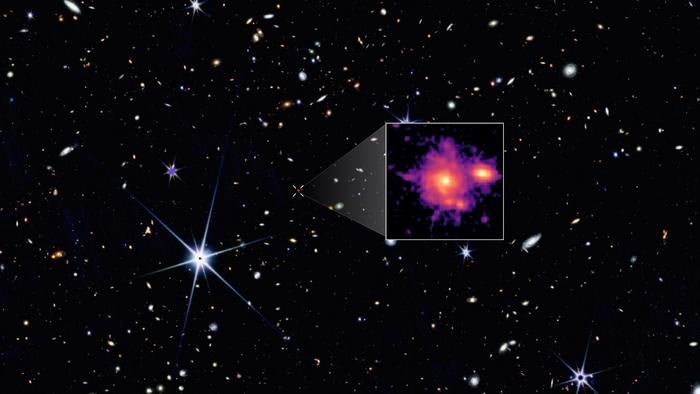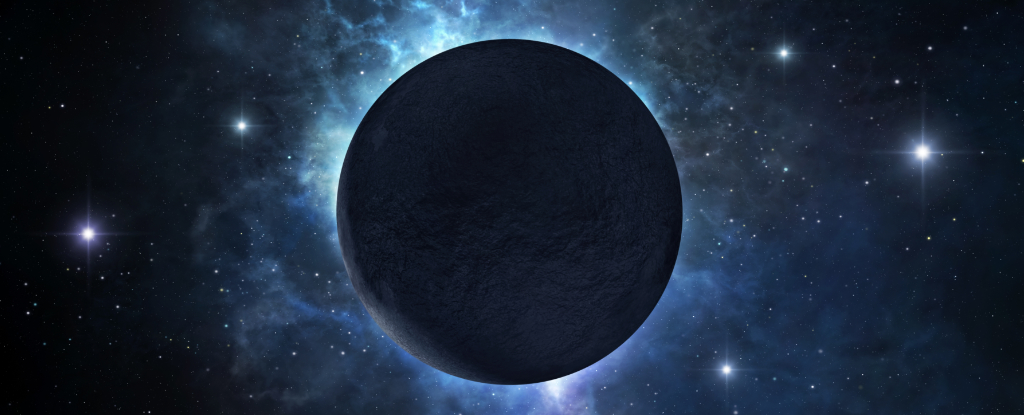James Webb Space Telescope Discovers Most Distant Spiral Galaxy, ‘Zhúlóng’

In a groundbreaking revelation from the depths of the cosmos, the James Webb Space Telescope (JWST) has identified a spiral galaxy named Zhúlóng, which translates to 'Torch Dragon' in Chinese mythology. This astonishing discovery offers new insight into the history of cosmic evolution, as Zhúlóng formed just one billion years after the Big Bang, a period when large, structured galaxies were not expected to exist.
Traditionally, astronomers believed that galaxies began their existence as chaotic and irregular blobs, gradually evolving into more structured forms like the spiral galaxies we see today, including our very own Milky Way. However, the observations made possible by the JWST are challenging this long-held belief. The telescope's advanced infrared capabilities have unveiled galaxies that are not only substantial in size but also display surprising levels of organization far earlier than previously anticipated.
Among these remarkable discoveries is Zhúlóng, which was serendipitously detected during the JWST's PANORAMIC survey. This galaxy is particularly noteworthy as it possesses a shape and structure that closely resembles that of the Milky Way. Dr. Mengyuan Xiao, the lead author of the study published in the journal Astronomy and Astrophysics, emphasizes this resemblance, saying, “What makes Zhúlóng stand out is just how much it resembles the Milky Way – both in shape, size, and stellar mass.”
Zhúlóng is not just a distant speck in the universe; it contains an impressive mass of over 100 billion solar masses in stars. Spanning approximately 62,000 light-years, its spiral arms are robust and dynamic, showcasing a stellar mass surface density of nearly 10 billion solar masses per square kiloparsec. Analyzing its light emissions, researchers observed that while the center of the galaxy glows red—suggesting an abundance of older stars and lower rates of star formation—the outer regions exhibit vibrant star-forming activity. This duality reflects a pattern that aligns with the growth dynamics observed in many contemporary spiral galaxies.
The discovery of Zhúlóng occurred by chance, as it was not the primary target of the survey but rather found while JWST was engaged in wide-field imaging. Utilizing a technique known as "pure parallel imaging," which allows the telescope to map expansive sky areas while observing specific targets, researchers were fortunate to uncover such a rare and significant galaxy. Dr. Christina Williams, co-leader of the PANORAMIC survey, remarked on the implications of this discovery, stating, “This discovery highlights the potential of pure parallel programs for uncovering rare, distant objects that stress-test galaxy formation models.”
Intriguingly, Zhúlóng's star formation rate is notably lower than other galaxies of similar size, producing stars at a rate of approximately 66 solar masses per year—almost ten times less than the typical dusty galaxies from that epoch. Despite this seemingly restrained star formation, Zhúlóng has reached full size and structure, suggesting an exceptionally efficient growth process, with around 30% of its available baryonic matter converted into stars. This efficiency is 1.5 times higher than what is typically observed in star-forming galaxies.
Furthermore, the JWST has revealed that early galaxies formed faster and with more complexity than previously recorded by the Hubble Space Telescope. Astronomers had anticipated that well-formed disk galaxies would not emerge until the universe was at least 3 billion years old. Instead, evidence is now surfacing for disks and spiral structures at redshifts exceeding 5, indicating their presence when the universe was younger than 1.2 billion years.
Recent findings suggest that nearly 50% of galaxies at redshift levels below 6 already exhibited disk shapes, tenfold higher than earlier models had predicted. Some of these galaxies even display grand-design spirals, a structured formation once thought to require extensive periods of stability to develop. The revelation of Zhúlóng fundamentally alters our understanding of galaxy formation in the early universe.
Prof. Pascal Oesch, co-leader of the PANORAMIC survey, emphasizes the transformative nature of these findings, asserting, “This discovery shows how JWST is fundamentally changing our view of the early Universe.” With future surveys planned to cover even greater expanses of the cosmos, scientists anticipate discovering more galaxies akin to Zhúlóng, which will provide invaluable opportunities to test and refine models of galaxy formation.
As we continue to observe and study Zhúlóng, alongside other early galaxies, we may uncover a range of evolutionary paths that galaxies can take, shaped by their unique environments and histories. The JWST has illuminated the possibility of galaxies like Zhúlóng growing rapidly and efficiently, challenging previous notions that structure and order in the universe take considerable time to develop.
In conclusion, Zhúlóng stands as compelling evidence that the early universe was not merely a realm of disorder, but rather one where sophisticated structures could arise with surprising speed. As we delve deeper into cosmic history, the Torch Dragon serves as a beacon, guiding us toward a richer understanding of the universe’s formation and evolution.



















